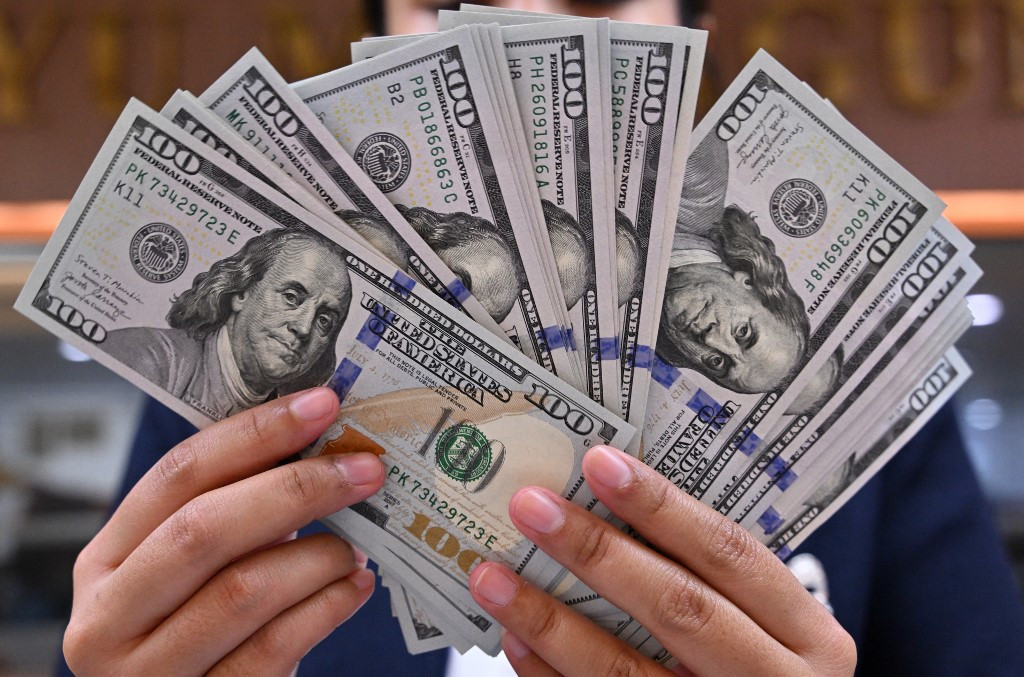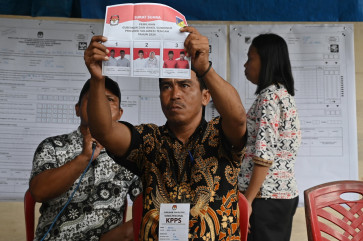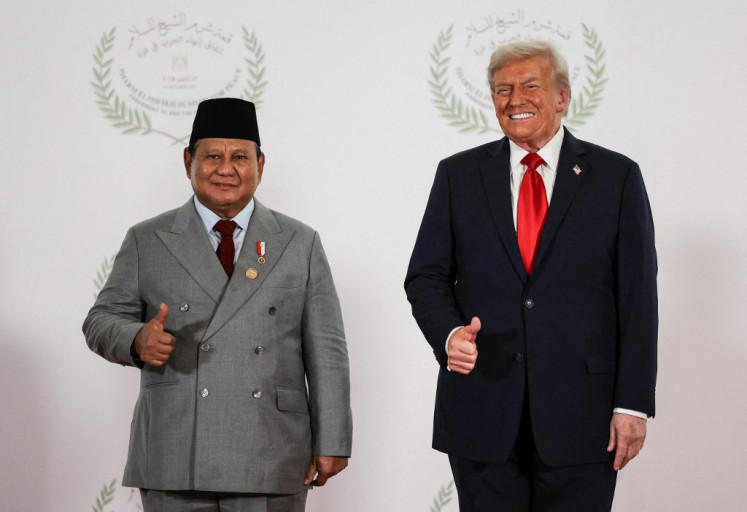Popular Reads
Top Results
Can't find what you're looking for?
View all search resultsPopular Reads
Top Results
Can't find what you're looking for?
View all search resultsDollar rises on tariff worries after Trump's Colombian threat
Change text size
Gift Premium Articles
to Anyone
T
he dollar firmed on Monday as traders pondered the ramifications of US President Donald Trump's tariff plans at the start of a week where the Federal Reserve is widely expected to hold interest rates steady.
The dollar clocked its weakest week since November 2023 last week on ebbing fears of tariffs from the Trump administration, but those worries resurfaced after he said he will impose sweeping measures on Colombia.
The retaliatory moves, including tariffs and sanctions, comes after the South American country turned away two US military aircraft with migrants being deported as part of the new US administration's immigration crackdown.
That led to the Mexican, a barometer of tariff worries, sliding 0.8 percent to 20.426 per dollar in early trade. The Canadian dollar was a bit weaker at $1.43715.
The euro was 0.14 percent lower at $1.0474 ahead of the European Central Bank policy meeting this week where the central bank is expected to lower borrowing costs. Sterling last fetched $1.24615.
That left the dollar index, which measures the US currency against six units, at 107.6, still close to the one-month low it touched last week.
Investor focus this week will be on the central banks and how policymakers are likely to react after Trump said he wants the Federal Reserve to cut interest rates.
The Fed is expected to keep rates unchanged when it concludes its two-day meeting on Wednesday, though investors will be watching for any clues that a rate cut could come in March if inflation continues to ease closer to the US central bank’s 2 percent annual target.
Data on Friday showed that US business activity slowed to a ninth-month low in January amid rising price pressures, while separately US existing home sales increased to a 10-month high in December.
"Optimism has surged about Trump’s growth-friendly America First agenda, inflationary pressures have intensified to a four-month high, and businesses are taking on employees at the quickest pace since 2022," said Kyle Chapman, FX markets analyst at Ballinger Group.
"That picture is suggestive of a reheating labor market, and strongly supportive of an extended pause at the Fed."
In other currencies, the Australian and New Zealand dollars were slightly lower but remained closer to their one-month highs touched last week. The Australian markets are closed for the day.
The Japanese yen strengthened nearly 0.4 percent to 155.41 per dollar in early trading after the Bank of Japan raised interest rates on Friday to their highest since the 2008 global financial crisis and revised up its inflation forecasts.
BOJ Governor Kazuo Ueda said the central bank will keep raising interest rates as wage and price increases broaden but offered few clues on the timing and pace of future rate hikes.
Mark Dowding, chief investment officer at RBC BlueBay Asset Management, said the renewed attention back on the Japan story could provide a catalyst for the yen to appreciate in the weeks ahead.
"The Japanese currency remains extremely undervalued on most valuation models and, as interest rate differentials narrow, we think that this will help the yen perform better in 2025."











